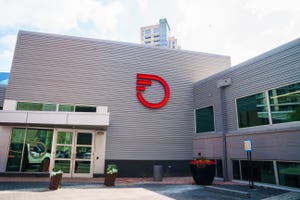NSX Helps Networks Cloudify – VMware
Helps network operators break organizational silos.

VMware has introduced a new version of NSX with new capabilities designed to help network operators migrate to the cloud.
When NSX, VMware Inc. (NYSE: VMW)'s network virtualization software, shipped two years ago, VMware envisioned it would be primarily used by "post-cloud" organizations, Chris King, VMware VP of product marketing for networking and security, tells Light Reading. Instead, it's been widely adopted in "pre-cloud organizations," he says.
What's the difference? Pre-cloud organizations are siloed. "The network group doesn't talk to the compute group and storage group," King says. "We thought that organizationally you had to break down the walls before you adopt NSX." But virtualization helps organizations break down those silos. For example, NSX offers management tools that provide a common view of compute, networks, storage, physical and virtual networks, allowing the organizations that manage those tools to collaborate.
For cloud service providers, NSX provides the ability to let each tenant have its own single-tenant infrastructure, by having its own private virtual network. That capability is enhanced in NSX 6.2, announced Monday, with features such as central CLI and Traceflow for enhanced operational, management, scalability and reliability.
NSX 6.2 builds on VMotion capabilities introduced in vSphere version 6.0, released in February. VMotion lets network operators migrate running virtual machines between two metro data centers -- for example, one in New York and one in New Jersey. NSX 6.2 expands that capability to allow moving VMs between virtual data centers as well.
Also in NSX 6.2, network operators can link virtual networks to physical hardware -- for example, linking a database running on a particular physical server to a particular virtual network for securely processing credit card transactions, King says.
NSX is a "platform that customers around the world are using to transform the operations of their data center networks and security infrastructure," King said in a blog post Monday. NSX has more than 700 customers, with more than 100 in production and more than 65 in a category that VMware calls "millionaires," meaning they have more than $1 million invested in NSX, King says. Service provider customers include FireHost, Heartland Payment Systems and IlliniCloud.
This talk of platform rather than of product is similar to VMWare arch-rival Cisco Systems Inc. (Nasdaq: CSCO)'s pitch that it doesn't just sell products, it sells whole architectures. In its most recent quarterly earnings report in early August, Cisco said its SDN architecture, comprising Application Centric Infrastructure (ACI) software and Nexus 3000 and Nexus 9000 switches, reaped $438 million in revenue, more than doubling annual quarterly growth and more than 50% sequential growth. Cisco added more than 1,400 new customers for the Nexus 9000, with 4,100 total, and 26 of the company's 28 largest enterprise customers are now Cisco 9000 customers, with 30% new in the fourth quarter.
Want to know more about SDN? Visit Light Reading's SDN Technology content channel.
NSX is based on technology from Nicira, which VMware acquired in 2012 for $1.05 billion in cash. (See VMware to Buy SDN Startup for More Than $1B.)
SDN is a pillar of the New IP, providing service providers with the agility they need to make rapid changes to the network to roll out services quickly to customers. (See SDN Rockets From Crazy to Essential.)
NSX 6.2 is available now. Perpetual licensing starts at $4,995 per CPI, and term licensing starts at $34 per VM per month, with volume discounts available.
— Mitch Wagner, 


 , West Coast Bureau Chief, Light Reading. Got a tip about SDN or NFV? Send it to [email protected].
, West Coast Bureau Chief, Light Reading. Got a tip about SDN or NFV? Send it to [email protected].
About the Author(s)
You May Also Like












